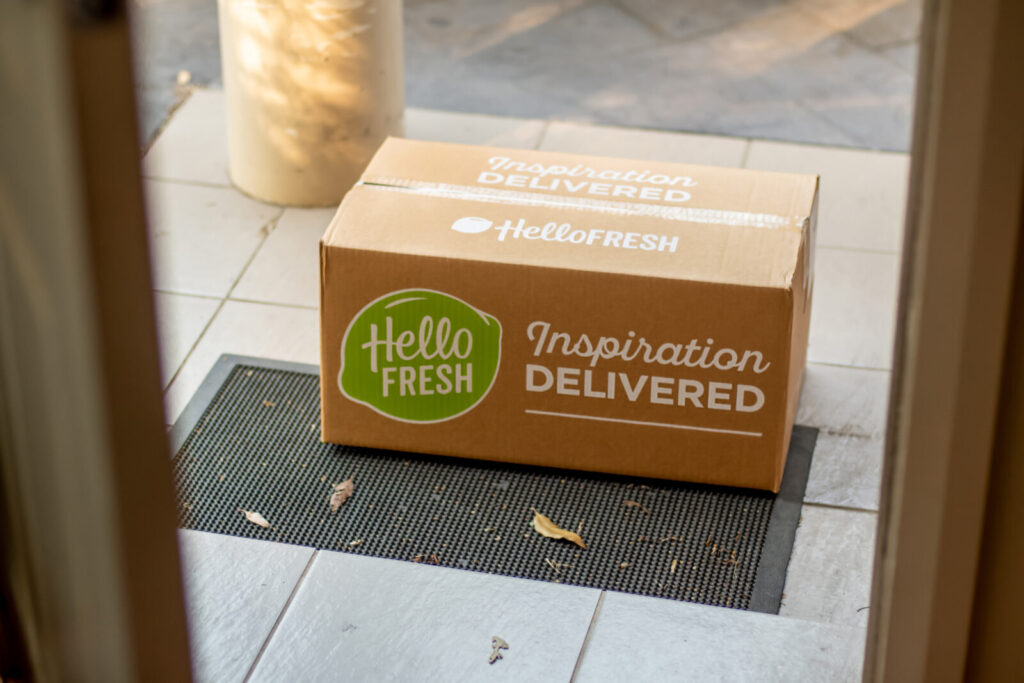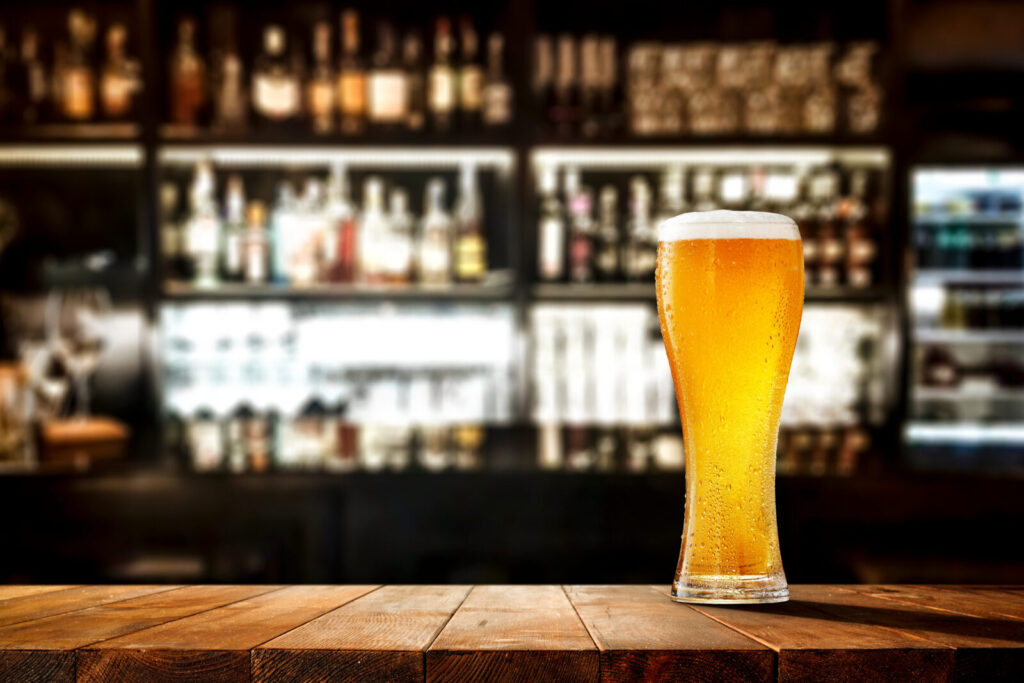Brief • 4 min Read
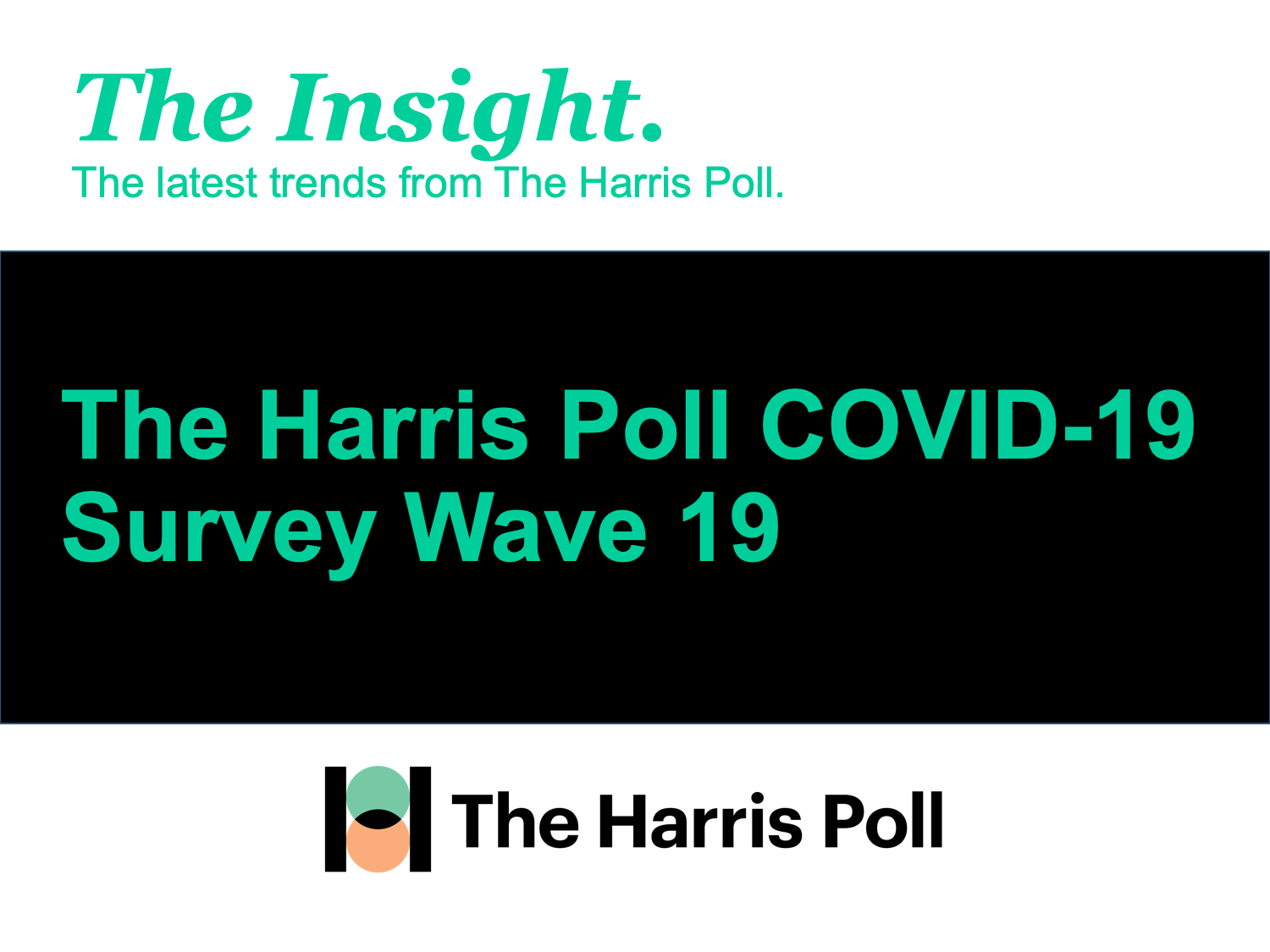
In Wave 19 of The Harris Poll COVID-19, Tracker fielded July 2nd through 4th, 2020, we look at the states’ attitudes towards COVID-19 policies and the rise of what we call ‘every state for itself’. We also search for signs of compromise between two emerging camps: the lock-downers vs. the freedom fighters. One wants health, the other jobs.
Life has changed dramatically since COVID-19, but now we’re coming to terms with just how much. In fact, many parts of American life might not ever return back to the way before, according to our new polling.
Lastly, we dig deeper into how business leaders are adapting to COVID-19 by developing new automated business processes as part of our new partnership with K2, a leader in intelligent process automation.
As a public service, our team has curated key insights to help leaders navigate Cv19. Full survey results, tables, and weekly summaries can be accessed for free at The Harris Poll Cv19 Portal. We will continue to actively field on a regular cadence to track the shifts in sentiment and behaviors as the news and guidelines evolve.
A Tale of Two Americas
At the start of April, New York, and New Jersey accounted for fully half of all cases nationwide. Those two states, plus five others, saw a combined rate of confirmed infections that was nearly eight times that of the rest of the country, according to Johns Hopkins. But as of July 1st, those other 43 states now account for two-thirds of all confirmed cases nationwide.
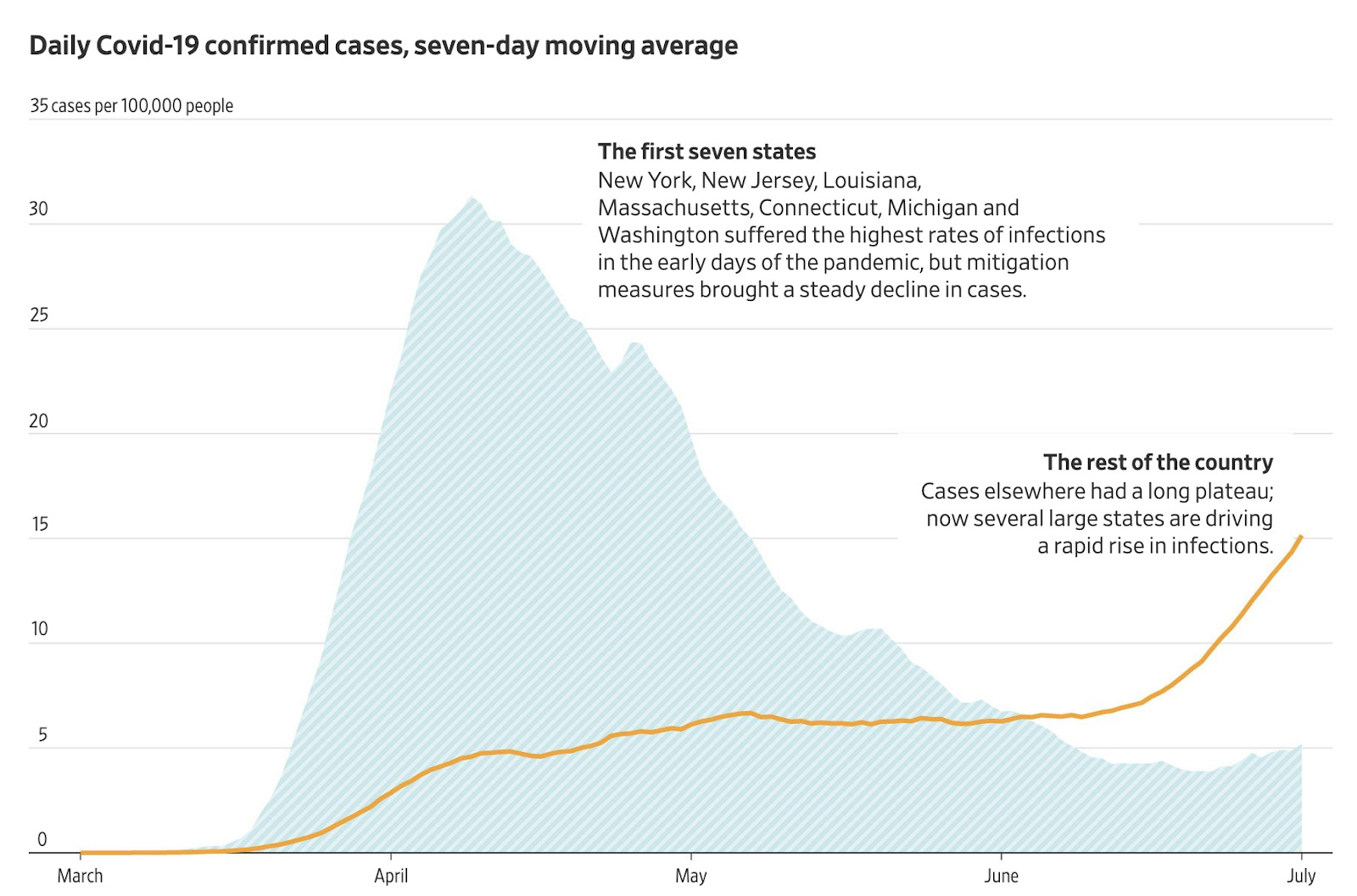
- According to the WSJ, “Americans are seeing the coronavirus pandemic play out in two parts, as states that bore the brunt of cases in the early months of the pandemic have mostly contained the spread, while a new wave of infections is now threatening much of the rest of the country.” In our Harris Poll data, we can see how hard-hit states like Texas, North Carolina, Tennessee, and California led the surge (read more here).
- A lack of coherent federal guidance might in part explain the growing finger-pointing among the states: (40%) say the resurgence of COVID-19 cases is because people in their state have acted recklessly by not following safety protocols. Women are more likely than men (43% vs. 36%) to say this, as are Seniors than either Gen Z/Millennials and Gen X (46% vs. 38% and 36%).
- More than one-third of Americans (37%) think the biggest driver for the resurgence in cases is the White House downplaying the danger of COVID-19 and diminishing effective defenses such as mask-wearing, testing, and social distancing. Again, women are more likely than men (40% vs. 34%) as are Seniors than Gen Z/Millennials, Gen X and Boomers (45% vs. 34%, 35%, and 37%, respectively).
- All throughout the pandemic, our polling has shown Governors and the States receiving high marks for handling COVID-19. Yet cracks are emerging as the attention shifts away from leaders who were mostly praised early on such as Governors Cuomo (D-NY), DeWine (R-OH), Murphy (D-NJ) and Hogan (R-MD).
- Now almost one-third (31%) of Americans think the resurgence of COVID-19 cases is because people in their state lack concern for the pandemic and we simply do not know enough about the virus to respond appropriately (29%). An equal number say there is no incentive for people to follow state recommended safety protocols as they were not enforced requirements; followed by the lack of a consistent, unified message from the White House (28%).
- In the meantime, Americans tell each other to stay home: In our new polling, more than three-quarters of Americans (77%) support states enacting mandatory 14-day quarantines for out-of-state travelers from states with a high resurgence of COVID-19. Again, women are more likely than men (81% vs. 73%). And of the nearly one-quarter (23%) who oppose, men are more likely than women (27% vs. 19%).
- But no state is an island: According to federal data, traffic has rebounded to 90% of pre-pandemic levels while Pew reports that COVID-19 is spreading along the nation’s highways like I-80 between central Illinois and Iowa, as well as along the I-90 corridor across upstate New York.
- Another statistic that is up: gun sales. A record June extended a surge that began in March as the COVID-19 prompted lockdowns across the country.
Takeaway: Nearly half of all US states have paused or rolled back reopening plans as COVID-19 cases continue to rise. From the outset, we lacked federal guidance on mask-wearing, testing, and contact tracing (which some experts now say might be moot). One hope might be in the women of America, who have been consistently more cautious and pragmatic in our polling. As critical swing-state voters, their voices might resonate. But right now it’s every state for itself.
Your Job or Your Life
Another lockdown amid the economic ruin was unthinkable even a few weeks ago. Now we have those who support another lockdown in the interest of public health vs. those who oppose on the basis of jobs and economics. This chart puts that trade-off into stark contrast:

- Loss of job fear: Almost six in ten (58%) are concerned that they may lose their job due to COVID-19, an increase of 5% since just June 29th. Men are more likely than women (65% vs. 49%) to fear losing their job and Gen Z/Millennials and Gen X are more likely than Boomers and Seniors (61% and 67% vs. 44% and 43%).
- Loss of life fear: While deaths from COVID-19 have (as of yet) not risen with spike in caseloads, the American fear is there: 52% fear they could die as a result of contracting coronavirus (up from 27% when we first asked this question on March 14). This is highest for Seniors (60%) compared to Gen Z/Millennials (46%) who are being outed as “silent spreaders” and a big driver of the recent resurgence, as reported in USA Today.
- Mixed reaction to containment efforts: Americans are split on their support for their state’s approach to re-opening, where (59%) support and (41%) oppose (Gen Z/Millennials are more likely than Seniors (45% vs. 37%) to oppose).
- Finding common ground means a plan for staying alive while keeping the economy alive: While, nearly half of Americans support lockdowns because they believe the past statewide lock downs have saved millions of lives (49%) and because people are dying (47%), those who oppose lockdowns say it’s unfair to force people to stay home who are out of work (56%), and a third say their state government has no plan in place to off-set economic hardship for those who can’t work from home.
- What will the pandemic change in the economy? With department stores disappearing, malls could be next.
- Some industries are getting creative to survive. With no summer concerts, It’s Garth Brooks at the Drive-In.
Takeaway: The fear of loss of a job vs. a life is an unimaginable calculation only months ago. Short of a national plan, a hyper-local mitigation needs to be put into place immediately across American communities to limit social contact and super-spreaders to protect workers and the elderly. We have seen how quickly jobs rebounded when the economy began to re-open. We have seen temerity in the Northeast. Can we endure national sacrifice in order to return to our way of life sooner rather than later? Stimulus in the form of PPP seemed to work effectively. Bear down; because this is still only the first wave we’re still fighting.
There’s No Going Back
Our senior strategist Tawny Saez devised an interesting way to look at the ‘new normal’. She tracked back over nineteen waves of survey points to see where in American life we’re most resigned to change. Here’s her money chart and her commentary that follows.
- Letting go of the way things were: Our trended data shows a steady decline in the amount of Americans who say core aspects of their lifestyle will return to normal. For instance, the percentage of Americans saying their work life and social activity will be the same as it was before has dropped 10 percentage points since April 3rd.

- What has fundamentally changed? Looking at travel, we see preferences shift from convenience to safety (which bodes well for the auto industry): while 43% say they miss flying on a plane, only 37% say they feel safe flying right now. In fact, today the car is viewed as the only safe mode of transportation; (90%) feel safe traveling by car which is more than 2x the amount who say they feel safe traveling by other means such as Uber (40%), trains (39%) and the subway (29%). And this summer, nearly 65% of leisure travelers say they will travel by car for summer vacations instead of flying.
- Staycations might lead to winter holidays hosted over Zoom: Looking out on the remainder of the year, (58%) of leisure travelers say they will substitute vacations with staycations, and even half (50%) go as far as substituting winter holiday travel with virtual gatherings. It’s only July but Santa might have to social distance this year, as reported by the BBC.
- Do we really need to go back to the office? Even though many states are allowing offices to re-open with restrictions, (84%) say “If work is able to be done remotely, employers should not require employees to return to the office until COVID-19 is no longer a threat.” And after months of remote working, many are concerned work culture won’t bounce back, (65%) agree “when it comes to our company’s culture, I worry that things will be different when we are physically together again.”
- Semper Ficus: Who’s Keeping Abandoned Office Plants Alive?
- In the meantime, the work-life adjustments we’re being forced to make now might make us more productive (and less jet lagged): Looking ahead to the remainder of the year, (74%) of business travelers are more likely to substitute business meetings that require flying with virtual meetings.
- And as we become accustomed to living with COVID-19, there are some habits that Americans are adopting for the long term: Nearly half (47%) say they will continue ordering food for delivery in the medium (21%) to long term (26%). And nearly half (47%) say they will continue buying products that boost their health and immunity in the long term.
- But we’re not becoming hermits! Pent up desire for socializing and growing consumer demand across categories shows that Americans plan on resuming activity, they just won’t be resuming ‘as normal’… For example: (39%) of Americans are planning a vacation once things return to normal but it will indeed look different, (73%) say their travel vacations will be very/somewhat different after the pandemic ends.
Takeaway: Certainly some routines and habits will snap back, while others will become imprinted. What is a certainty is that this is a time for a re-set. Every brand, company, institution, and individual is re-thinking positioning, relevance and value-proposition. New attitudes and values are an outcome of this pandemic. In the great re-think, values will be a critical guide to defining what makes any entity authentic and necessary. No longer about going back to the way things were, the focus now is on how to rebuild and re-emerge better, stronger and more modern. This is no time to be nostalgic! Let it go…
Automation Nation
The Harris Poll recently conducted a study with K2 – a leader in intelligent process automation – to dig deeper into how businesses are adapting due to COVID-19 to prioritize development of new, automated business processes. Nearly all (92%) business leaders agree that to survive and flourish, companies must utilize digital channels and process automation in the workplace.
- Eight in ten (80%) companies reported that they are facing new challenges as a result of COVID-19, and a large majority of business leaders (88%) agree that the pandemic has revealed an increased need for process automation.
- Although businesses are prioritizing development of new, automated processes to address the pandemic, only (7%) of businesses are prepared to deal with the breadth of issues COVID-19 brings.
- There is a disconnect between the C-Suite and the teams under them. When it comes to C-level execs, (53%) believe their companies are very prepared for outbreak response planning versus only (40%) of lower level leaders. This disconnect is seen across many additional COVID-19 needs, such as visitor screening (52% vs. 39%) and employee self-screening (51% vs. 39%).
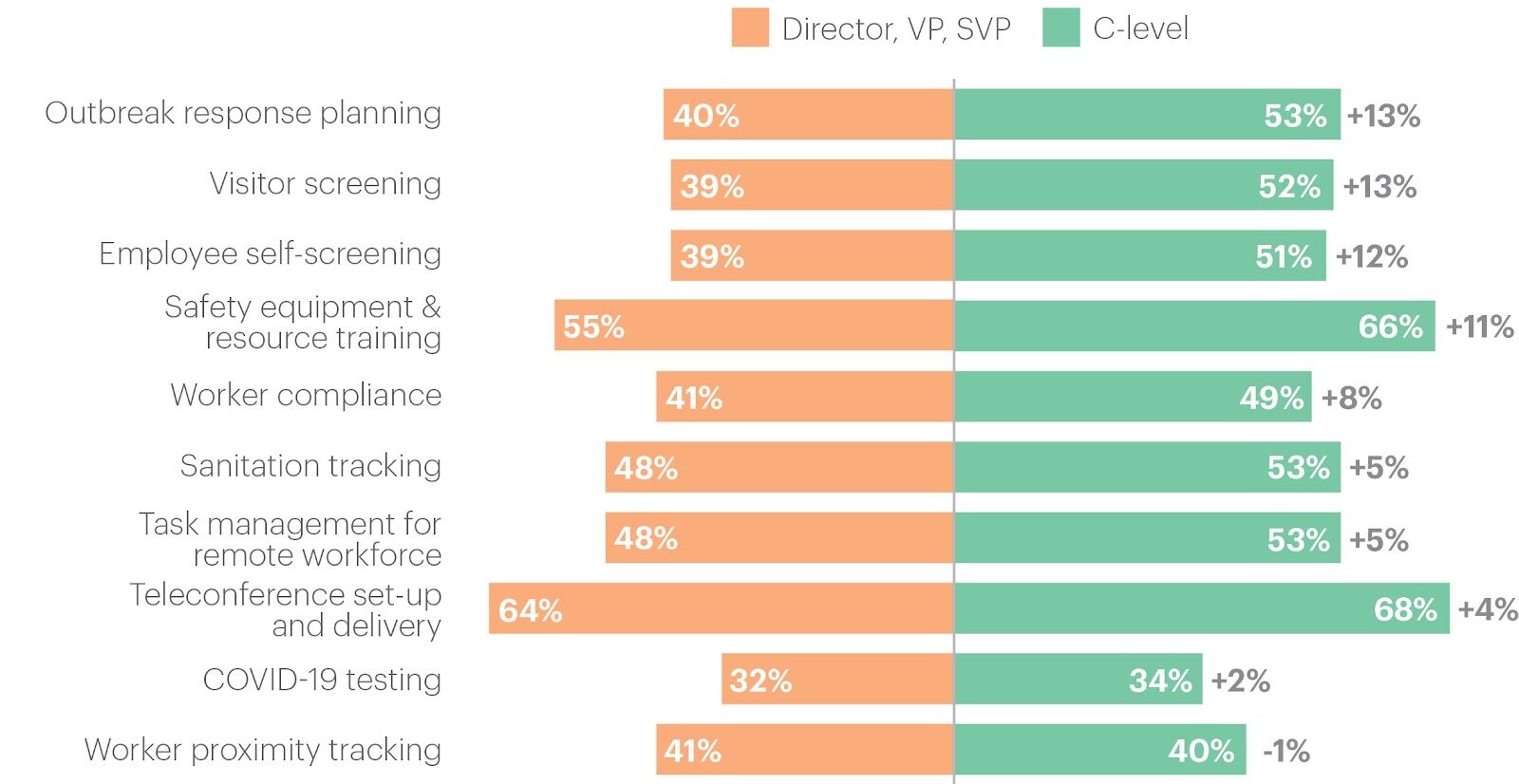
- On average, only about half (51%) of business processes are automated. Across regions, only 1 in 5 are embracing and utilizing process automation in its most advanced forms, and nearly 1 in 10 are at the beginning, having only taken initial steps toward automation.
- However, businesses are expecting to significantly increase the number of processes that are digitized or automated over the next 12 months – on average, businesses are projecting growth rates of 20%.
- Automation is also key to meeting customer satisfaction goals, and more than one-third of 3 companies (36%) across regions are having difficulty meeting those goals. Nearly all (92%) acknowledge that effective use of process automation and digital transformation is key to addressing this aspect of their business.
Takeaway: Organizations overwhelmingly agree that business process automation must be embraced and incorporated to address new, immediate business realities as well as to ensure long-term survival. While addressing this disconnect and need for automation is the first step, implementing plans and policies is not an easy road ahead. Those who are most effective at overcoming barriers and rallying their teams to embrace change will be well-poised to win in the post-COVID world.
Subscribe for more Insights
Subscribe to our newsletter for the latest trends in business, politics, culture, and more.
Download the Data
This survey was conducted online within the U.S. by The Harris Poll from July 2 to 4 among a nationally representative sample of 1,957 U.S. adults.
Download
Subscribe for more Insights
Subscribe to our newsletter for the latest trends in business, politics, culture, and more.
Download the Data
This survey was conducted online within the U.S. by The Harris Poll from July 2 to 4 among a nationally representative sample of 1,957 U.S. adults.
DownloadRelated Content






